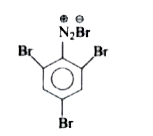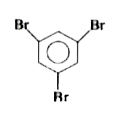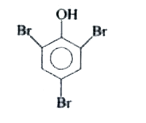The end product of oxidative phosphorylation is
ATP
O2
NADH2
ATP&H2O
The correct Answer is:D
Step-by-Step Solution:
1. Understanding Oxidative Phosphorylation:
- Oxidative phosphorylation is a metabolic pathway that occurs in the mitochondria of cells. It involves the oxidation of metabolites and the production of ATP.
2. Role of Electron Carriers:
- In this process, electron carriers such as NADH and FADH2 donate electrons to the electron transport chain (ETC). This transfer of electrons is crucial for the subsequent steps.
3. Electron Transport Chain (ETC):
- The electrons move through a series of proteins in the inner mitochondrial membrane, releasing energy as they go. This energy is used to pump protons (H+) from the mitochondrial matrix into the intermembrane space, creating a proton gradient.
4. Chemiosmosis:
- The proton gradient established by the ETC leads to chemiosmosis, where protons flow back into the matrix through ATP synthase. This flow drives the synthesis of ATP from ADP and inorganic phosphate.
5. Formation of Water:
- At the end of the electron transport chain, the electrons combine with molecular oxygen (O2) and protons (H+) to form water (H2O). This reaction is essential as it helps to maintain the flow of electrons through the chain.
6. End Products of Oxidative Phosphorylation:
- The main end products of oxidative phosphorylation are ATP and water (H2O). Therefore, the correct answer to the question is that the end products are ATP and H2O.
Final Answer:
The end product of oxidative phosphorylation is ATP and H2O.
---
- Oxidative phosphorylation is a metabolic pathway that occurs in the mitochondria of cells. It involves the oxidation of metabolites and the production of ATP.
- In this process, electron carriers such as NADH and FADH2 donate electrons to the electron transport chain (ETC). This transfer of electrons is crucial for the subsequent steps.
- The electrons move through a series of proteins in the inner mitochondrial membrane, releasing energy as they go. This energy is used to pump protons (H+) from the mitochondrial matrix into the intermembrane space, creating a proton gradient.
- The proton gradient established by the ETC leads to chemiosmosis, where protons flow back into the matrix through ATP synthase. This flow drives the synthesis of ATP from ADP and inorganic phosphate.
- At the end of the electron transport chain, the electrons combine with molecular oxygen (O2) and protons (H+) to form water (H2O). This reaction is essential as it helps to maintain the flow of electrons through the chain.
- The main end products of oxidative phosphorylation are ATP and water (H2O). Therefore, the correct answer to the question is that the end products are ATP and H2O.
The end product of oxidative phosphorylation is ATP and H2O.
Topper's Solved these Questions
Similar Questions
Knowledge Check

The end product Y is :A B
B C
C D
D
Oxidative phosphorylation is done by
View SolutionOxidative phosphorylation refers to
View SolutionThe process of oxidative phosphorylation takes place in
View SolutionWhat is oxidative phosphorylation?
View SolutionWhat is oxidative phosphorylation?
View SolutionWhat is oxidative phosphorylation?
View SolutionWhat is oxidative phosphorylation?
View Solution
